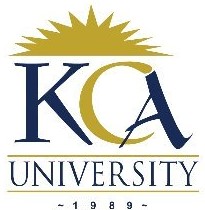 UNIVERSITY EXAMINATIONS: 2018/2019
UNIVERSITY EXAMINATIONS: 2018/2019
EXAMINATION FOR THE DEGREE OF BACHELOR OF SCIENCE IN
INFORMATION TECHNOLOGY /BACHELOR OF SCIENCE IN
INFORMATION COMMUNICATIONS TECHNOLOGY / BACHELOR OF
APPLIED COMPUTING
BIT 4302: TELECOMMUNICATIONS
FULL TIME/PART TIME/DISTANCE LEARNING
DATE: AUGUST, 2019 TIME: 2 HOURS
INSTRUCTIONS: Answer Question One & ANY OTHER TWO questions.
QUESTION ONE [30 MARKS]
a) Discuss the major differences and similarities between WLANs and wired Ethernet
6 Marks
b) Define the following terminologies as used in telecommunications:
(i) Half Duplex 1 Mark
(ii) Full Duplex 1 Mark
(iii) Connection-oriented network service 1 Mark
(iv) Synchronous Transmission 1 Mark
c) ITU is divided into three main sectors: ITU-R, ITU-T and ITU-D. Explain the role of each
sector. 6 Marks
d) Describe briefly the following VoIP components:
(i) Call Agents 2Marks
(ii) Gateways 2 Marks
(iii) Gatekeepers 2 Marks
e) With the aid of relevant diagrams represent the binary number 0101100101 using the
following encoding schemes 8 Marks
(i) Manchester encoding
(ii) Differential Manchester encoding
(iii) Bipolar AMI
(iv) Frequency Shift Keying (FSK)
QUESTION TWO [20 MARKS]
a) Discuss briefly the following:
(i) Fixed network delay 3 Marks
(ii) Variable network delay 3 Marks
b) Briefly describe the following types of noise in data communications:
(i) Thermal noise 2 Marks
(ii) Inter-modulation Noise 2 Marks
c) Explain briefly the following key data communication concepts
(i) Session 1 Mark
(ii) Path 1 Mark
(iii) Circuit 1 Mark
(iv) Packetizing 1 Mark
(v) Routing 1 Mark
d) Explain why the telecommunications industry and its customers are shifting towards digital
transmission. 5 Marks
QUESTION THREE [20 MARKS]
a) How can network administrators accelerate the packet dispatching for delay-sensitive
flows? 6 Marks
b) Wireless LANs can accommodate various network topologies. The standard defines a BSS
as a group of stations that communicate with each other. In this regard, discuss briefly the
following 802.11 toplogies:
(i) Ad hoc networks. 2 Marks
(ii) Basic Service Set (BSS) 2 Marks
(iii) Extended Service Set (ESS) 2 Marks
c) PCM (Pulse Code Modulation) is the process in which a signal is sampled, and the
magnitude of the each sample with respect to a fixed reference is quantized and converted
by coding to a digital signal.
(i) Define sampling, quantization and encoding. 6 Marks
(ii) State Nyquist Sampling Theorem 1 Mark
(iii) Voice has frequency ranging from (approximately) 0 to 5000 Hz. To reconstruct
the signal when digitized, at what rate should samples be taken? 1 Mark
QUESTION FOUR [20 MARKS]
a) The switching network could be packet switched or circuit switched. Briefly highlight the
features of each type of switching network. 6 Marks
b) Explain the FDMA, TDMA and CDMA multiple access techniques that are used in
wireless communications and outline two principal weaknesses of FDMA and TDMA.
9 Marks
c) Define the following terminologies in relation to satellite communications:
(i) Earth Stations 1 Mark
(ii) Uplink 1 Mark
(iii) Downlink 1 Mark
(iv) Transponder 1 Mark
(v) Elevation angle 1 Mark
QUESTION FIVE [20 MARKS]
a) In the GSM900 technology:
(i) How many pairs of simplex channels exist? 1 Mark
(ii) How many users can be supported per channel? 1 Mark
(iii) What is the MU and BS transmission band? 2 Marks
(iv) If a station has a downlink frequency of 936.4MHz, what is its corresponding
uplink frequency? 1 Mark
(v) What is the role of the Network Subsystem (NSS)? 2 Marks
(v) What is the role of the Base Station Subsystem? 2 Marks
b) A channel has a spectrum between 6 MHz and 8 MHz; SNRdB =20 dB.
(i) Calculate the channel capacity. 5 Marks
(ii) How many signal levels are required? 2 Marks
c) Show that 100-MHz waves are about 3 meters long and 0.1 meter waves have a
frequency of 3000 MHz. Derive the appropriate rule of thumb. 4 Marks
